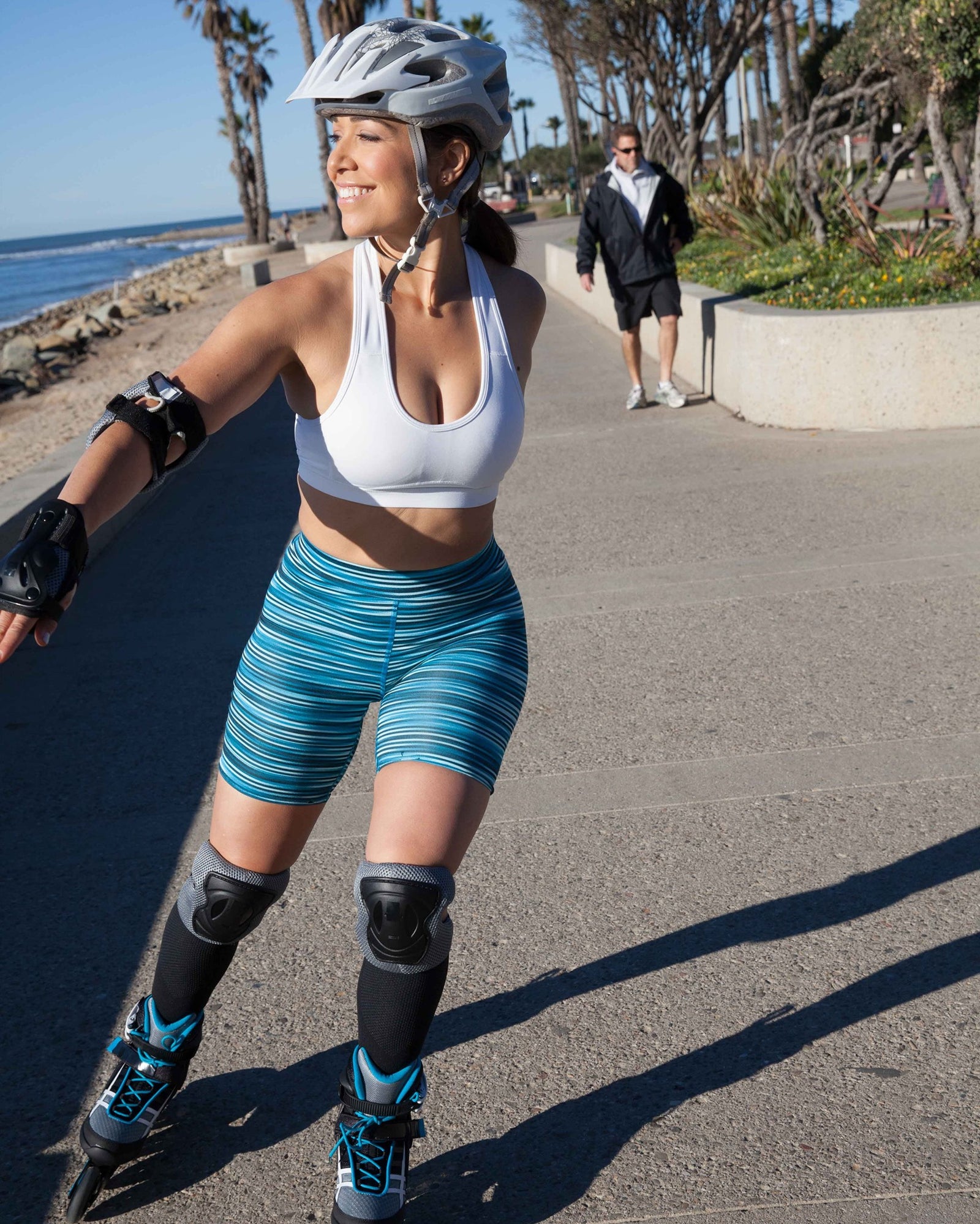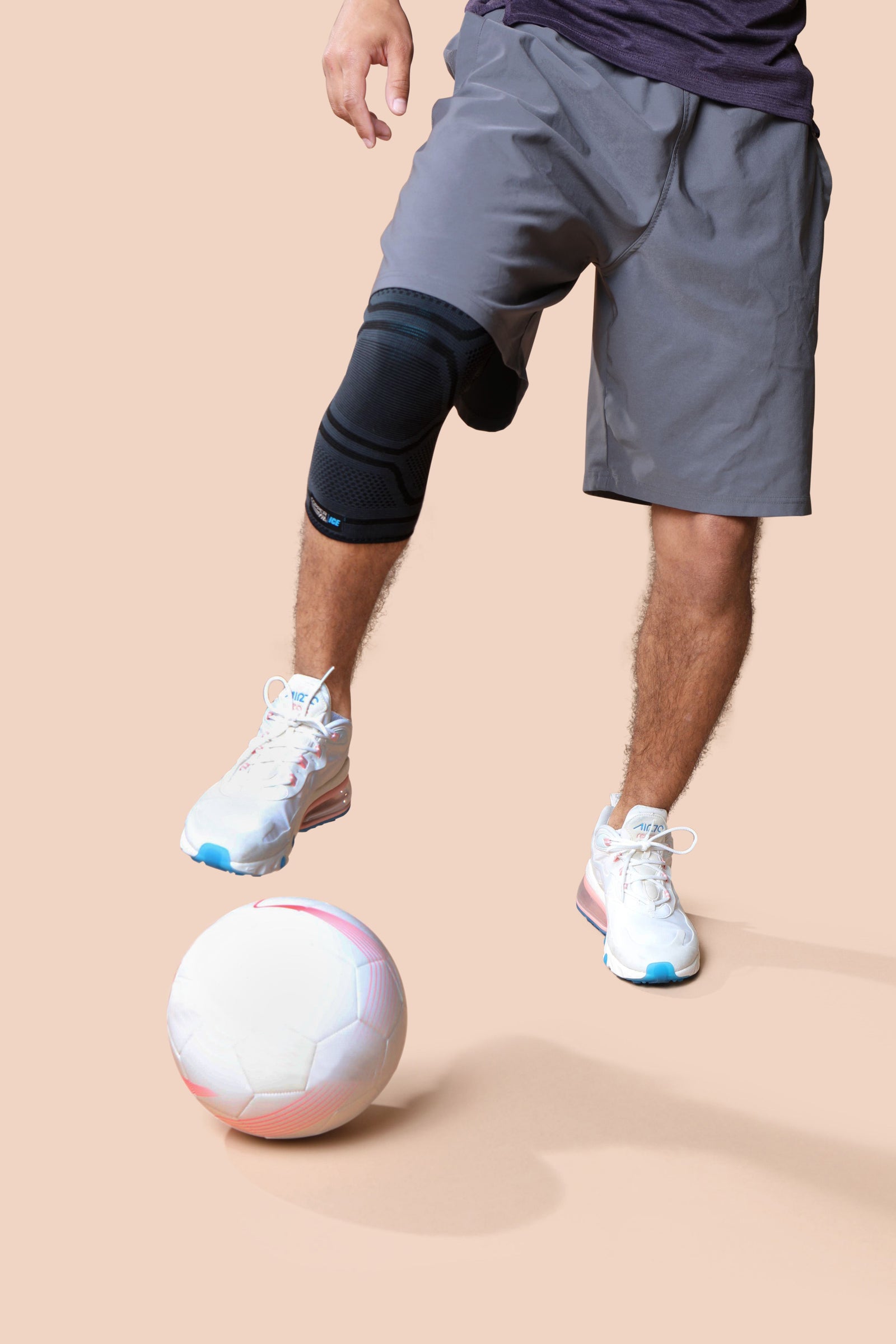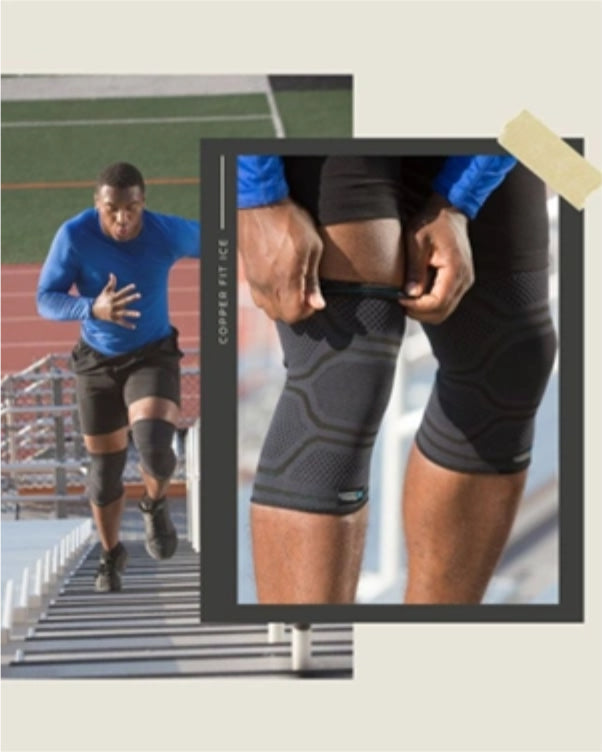
Key Takeaways
- Running in the rain is safe, energizing, and accessible with the right gear, mindset, and preparation.
- Moisture-wicking layers, supportive compression gear, and weather-smart techniques help keep your stride steady and your body comfortable.
- Recovery matters just as much as the workout, and tools that help soothe tension and support healthy blood flow can make rainy-run training more enjoyable.
Stepping outside for a run when the sky is gray and the rain is coming down can feel like a challenge, but it’s also one of the most empowering decisions a runner can make. There’s something motivating about showing up for yourself despite imperfect weather.
With some preparation, the right mindset, and supportive recovery habits, running in the rain can actually feel refreshing, effective, and confidence-boosting.
This guide breaks down everything you need to know so you can stay active, stay safe, and keep moving, no matter the conditions.
What Are the Benefits of Running in the Rain?
Rainy-weather running offers more than just a unique atmosphere. Cooler temperatures help support longer endurance sessions by reducing heat buildup, which can make steady pacing feel more manageable. Many runners also find that the quieter paths and lighter crowds help them focus on their form and breathing without distractions.
There’s also a major mental benefit: choosing to run in the rain builds discipline and resilience. It reinforces the idea that your routine isn’t limited by convenience. Showing up despite slick sidewalks or drizzle teaches consistency, and that sense of follow-through often translates into other parts of life.
How To Prepare for a Rainy Run
Preparation is what turns a rainy run from intimidating to enjoyable. A few smart adjustments make all the difference.
Check the Weather First
A light or moderate rain is perfectly manageable, but certain conditions are not. Skip runs during thunderstorms, lightning, high winds, or extreme cold. Rain itself isn’t risky, but poor visibility and unsafe routes can be. Choose well-lit, familiar paths with predictable footing. If possible, tell someone your route, or use a running app that shares your progress.
Choose the Right Apparel
What you wear determines how comfortable you’ll be once you're out there. Moisture-wicking fabrics are essential because they help pull water away from your skin and support temperature regulation. Cotton, on the other hand, holds water and quickly becomes heavy.
A lightweight, breathable, water-resistant jacket helps shield your core without trapping heat. Running tights or shorts made from performance materials stay close to the body and reduce chafing. Since friction increases when fabrics get wet, choosing smooth, seamless-feeling materials can help avoid irritation.
Essential Gear for Running in the Rain
Having the right gear can make all the difference in how comfortable, enjoyable, and safe your rainy day run is.
Footwear Matters
Your shoes are the foundation of your rainy-run experience. Look for models with strong traction patterns that grip wet surfaces more effectively. Trail shoes can be helpful even on paved areas if the forecast is especially wet.
Quick-drying uppers prevent shoes from feeling soggy, and structured midsoles keep your feet supported. Consider rotating in an older pair for especially messy routes. Just ensure the tread is still in good shape.
Socks Designed for Wet Conditions
Comfortable running starts with dry feet. Moisture-wicking socks help prevent bunching and irritation. Copper-infused socks naturally reduce odor, making them a great choice for rainy days when dampness is unavoidable. A snug but flexible fit helps reduce slipping inside the shoe.
Prioritize Visibility
Rain reduces visibility for both runners and drivers. Reflective gear (vests, strips, headlamps) helps ensure you’re noticeable from a distance. Even during daylight hours, gray skies can cast shadows that make runners harder to see. Visibility gear gives you more control over your safety.
Other Items To Consider
A brimmed cap helps keep raindrops out of your eyes. Lightweight gloves protect your hands when the rain is cold. A waterproof belt or pouch protects your phone and essentials without feeling bulky. These small additions keep the run smooth and stress-free.
Proper Running Technique in Wet Conditions
Adjusting your technique helps you stay stable and confident.
Shorten Your Stride Slightly
A shorter stride helps improve traction and stability. It keeps your center of gravity more controlled, which reduces the risk of slipping on slick surfaces. A consistent, steady cadence also helps you maintain momentum without overreaching.
Relax Into Good Posture
A slight forward lean can help redirect your momentum and prevent water from hitting your face directly. Keep your shoulders relaxed; tension wastes energy and can make rainy conditions feel more tiring.
Be Selective With Foot Placement
Painted lines, metal grates, leaves, and smooth concrete become slick when wet. Aim for ground surfaces with texture. Land mid-foot when possible, which helps improve control and balance on changing terrain.
Safety Tips for Running in the Rain
While running in the rain can serve as an energizing way to mix up your routine and introduce a new mental component, there are a few things you’ll want to pay a little extra attention to when it comes to staying safe.
Avoid Risky Terrain
Remain observant during your run, and avoid terrain that could become slick or unstable when wet, such as dirt trails that may be muddy. When in doubt, choose the clearer path.
Stay Visible and Predictable
Wear bright or reflective clothing. If running near traffic, run against the flow so you can see what’s coming. Keep headphones at a low volume or skip them to stay more alert.
Protect Your Electronics
Keep your phone in a waterproof pouch or zippered pocket. Even water-resistant phones can struggle with heavy rain.
Know When It’s Too Cold
Rain combined with low temperatures can make muscles stiff quickly. If you feel excessively chilled, end the workout early and warm up indoors.
Tips for Your Post-Run Recovery
What you do after the run is just as important as what you do during it.
Change Into Dry Clothing Right Away
Once you get home, change out of wet clothes immediately. This helps your body warm back up and prevents excess chill. Dry your feet thoroughly and check for hot spots or irritation from wet shoes and socks.
Warm Up the Body
A warm shower, light stretching, and gentle movement help bring your body back to a comfortable baseline. Avoid forcing deep stretches; focus on mobility and relaxation.
Support Your Recovery Tools
Compression gear can be especially helpful after a rainy run. Products that help support healthy circulation and soothe tension encourage the body to unwind after working in cooler, wetter conditions.
How To Stay Motivated and Actually Enjoy Running in the Rain
Motivation plays a big role in showing up for a rainy run. Setting small goals makes the process more enjoyable; aim to run to a certain landmark, or give yourself a post-run reward like a warm drink or a relaxing cooldown routine.
Remind yourself that choosing to run despite imperfect conditions builds confidence and momentum. For beginners, overcoming the hesitation around rain can be an empowering step in building a routine. Copper Fit’s mission is rooted in supporting people who want to stay active, feel better, and enjoy life every day, and rainy-day resilience fits right into that spirit.
FAQ
Is it safe to run in the rain?
Yes, running in the rain is safe as long as you avoid thunderstorms, lightning, high winds, and extremely cold temperatures. Choose well-lit, familiar routes and wear reflective gear to stay visible.
What should I wear for running in the rain?
Moisture-wicking layers, a light water-resistant jacket, secure-fitting socks, and shoes with good traction make rainy runs more comfortable. Compression sleeves or socks can help support healthy blood flow and keep your muscles feeling ready.
How do I keep my shoes from getting ruined in the rain?
After your run, remove the insoles and let both the shoes and soles air-dry in a warm, ventilated area. Avoid direct heat sources, which can damage shoe materials. Stuffing them with dry towels helps speed the drying process.
The Bottom Line
Running in the rain strengthens your discipline, boosts your confidence, and keeps your training consistent. With the right gear, the right mindset, and supportive recovery habits, you can stay active through more days of the year.
At Copper Fit, we believe in helping you keep moving, stay comfortable, and feel your best—rain or shine.
Sources:
The wonders of winter workouts | Harvard Health
Proper Running Form for Every Part of the Body, from a Running Coach | HSS
Cold exposure and musculoskeletal conditions; A scoping review | PMC





